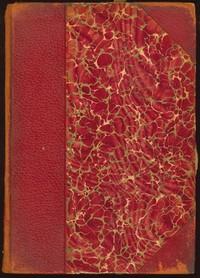|
|
Read this ebook for free! No credit card needed, absolutely nothing to pay.Words: 93290 in 18 pages
This is an ebook sharing website. You can read the uploaded ebooks for free here. No credit cards needed, nothing to pay. If you want to own a digital copy of the ebook, or want to read offline with your favorite ebook-reader, then you can choose to buy and download the ebook.

: History Of Egypt Chaldæa Syria Babylonia and Assyria Volume 1 (of 12) by Maspero G Gaston Sayce A H Archibald Henry Editor McClure M L Translator - History Ancient; Middle East History; Egypt History To 640 A.D.; Civilization Ancient Egypt@FreeBooksTue 06 Jun, 2023 As the successive floods grow stronger and are more heavily charged with mud, the whole mass of water becomes turbid and changes colour. In eight or ten days it has turned from greyish blue to dark red, occasionally of so intense a colour as to look like newly shed blood. The "Red Nile" is not unwholesome like the "Green Nile," and the suspended mud to which it owes its suspicious appearance deprives the water of none of its freshness and lightness. It reaches its full height towards the 15th of July; but the dykes which confine it, and the barriers constructed across the mouths of canals, still prevent it from overflowing. The Nile must be considered high enough to submerge the land adequately before it is set free. The ancient Egyptians measured its height by cubits of twenty-one and a quarter inches. At fourteen cubits, they pronounced it an excellent Nile; below thirteen, or above fifteen, it was accounted insufficient or excessive, and in either case meant famine, and perhaps pestilence at hand. To this day the natives watch its advance with the same anxious eagerness; and from the 3rd of July, public criers, walking the streets of Cairo, announce each morning what progress it has made since evening. More or less authentic traditions assert that the prelude to the opening of the canals, in the time of the Pharaohs, was the solemn casting to the waters of a young girl decked as for her bridal--the "Bride of the Nile." Even after the Arab conquest, the irruption of the river into the bosom of the land was still considered as an actual marriage; the contract was drawn up by a cadi, and witnesses confirmed its consummation with the most fantastic formalities of Oriental ceremonial. It is generally between the 1st and 16th of July that it is decided to break through the dykes. When that proceeding has been solemnly accomplished in state, the flood still takes several days to fill the canals, and afterwards spreads over the low lands, advancing little by little to the very edge of the desert. Egypt is then one sheet of turbid water spreading between two lines of rock and sand, flecked with green and black spots where there are towns or where the ground rises, and divided into irregular compartments by raised roads connecting the villages. In Nubia the river attains its greatest height towards the end of August; at Cairo and in the Delta not until three weeks or a month later. For about eight days it remains stationary, and then begins to fall imperceptibly. Sometimes there is a new freshet in October, and the river again increases in height. But the rise is unsustained; once more it falls as rapidly as it rose, and by December the river has completely retired to the limits of its bed. One after another, the streams which fed it fail or dwindle. The Tacazze is lost among the sands before rejoining it, and the Blue Nile, well-nigh deprived of tributaries, is but scantily maintained by Abyssinian snows. The White Nile is indebted to the Great Lakes for the greater persistence of its waters, which feed the river as far as the Mediterranean, and save the valley from utter drought in winter. But, even with this resource, the level of the water falls daily, and its volume is diminished. Long-hidden sandbanks reappear, and are again linked into continuous line. Islands expand by the rise of shingly beaches, which gradually reconnect them with each other and with the shore. Smaller branches of the river cease to flow, and form a mere network of stagnant pools and muddy ponds, which fast dry up. The main channel itself is only intermittently navigable; after March boats run aground in it, and are forced to await the return of the inundation for their release. From the middle of April to the middle of June, Egypt is only half alive, awaiting the new Nile. Those ruddy and heavily charged waters, rising and retiring with almost mathematical regularity, bring and leave the spoils of the countries they have traversed: sand from Nubia, whitish clay from the regions of the Lakes, ferruginous mud, and the various rock-formations of Abyssinia. These materials are not uniformly disseminated in the deposits; their precipitation being regulated both by their specific gravity and the velocity of the current. Flattened stones and rounded pebbles are left behind at the cataract between Syene and Keneh, while coarser particles of sand are suspended in the undercurrents and serve to raise the bed of the river, or are carried out to sea and form the sandbanks which are slowly rising at the Damietta and Rosetta mouths of the Nile. The mud and finer particles rise towards the surface, and are deposited upon the land after the opening of the dykes. Soil which is entirely dependent on the deposit of a river, and periodically invaded by it, necessarily maintains but a scanty flora; and though it is well known that, as a general rule, a flora is rich in proportion to its distance from the poles and its approach to the equator, it is also admitted that Egypt offers an exception to this rule. At the most, she has not more than a thousand species, while, with equal area, England, for instance, possesses more than fifteen hundred; and of this thousand, the greater number are not indigenous. Many of them have been brought From Central Africa by the river: birds and winds have continued the work, and man himself has contributed his part in making it more complete. From Asia he has at different times brought wheat barley the olive, the apple, the white or pink almond, and some twenty other species now acclimatized on the banks of the Nile. Marsh plants predominate in the Delta; but the papyrus, and the three varieties of blue, white, and pink lotus which once flourished there, being no longer cultivated, have now almost entirely disappeared, and reverted to their original habitats. The sycamore and the date-palm, both importations from Central Africa, have better adapted themselves to their exile, and are now fully naturalized on Egyptian soil. The sycamore grows in sand on the edge of the desert as vigorously as in the midst of a well-watered country. Its roots go deep in search of water, which infiltrates as far as the gorges of the hills, and they absorb it freely, even where drought seems to reign supreme. The heavy, squat, gnarled trunk occasionally attains to colossal dimensions, without ever growing very high. Its rounded masses of compact foliage are so wide-spreading that a single tree in the distance may give the impression of several grouped together; and its shade is dense, and impenetrable to the sun. A striking contrast to the sycamore is presented by the date-palm. Its round and slender stem rises uninterruptedly to a height of thirteen to sixteen yards; its head is crowned with a cluster of flexible leaves arranged in two or three tiers, but so scanty, so pitilessly slit, that they fail to keep off the light, and cast but a slight and unrefreshing shadow. Few trees have so elegant an appearance, yet few are so monotonously elegant. There are palm trees to be seen on every hand; isolated, clustered by twos and threes at the mouths of ravines and about the villages, planted in regular file along the banks of the river like rows of columns, symmetrically arranged in plantations,--these are the invariable background against which other trees are grouped, diversifying the landscape. The feathery tamarisk and the nabk, the moringa, the carob, or locust tree several varieties of acacia and mimosa-the sont, the mimosa habbas, the white acacia, the Acacia Parnesxana--and the pomegranate tree, increase in number with the distance from the Mediterranean. The dry air of the valley is marvellously suited to them, but makes the tissue of their foliage hard and fibrous, imparting an aerial aspect, and such faded tints as are unknown to their growth in other climates. The greater number of these trees do not reproduce themselves spontaneously, and tend to disappear when neglected. The Acacia Seyal, formerly abundant by the banks of the river, is now almost entirely confined to certain valleys of the Theban desert, along with a variety of the kernelled d?m-palm, of which a poetical description has come down to us from the Ancient Egyptians. The common d?m-palm bifurcates at eight or ten yards from the ground; these branches are subdivided, and terminate in bunches of twenty to thirty palmate and fibrous leaves, six to eight feet long. At the beginning of this century the tree was common in Upper Egypt, but it is now becoming scarce, and we are within measurable distance of the time when its presence will be an exception north of the first cataract. Willows are decreasing in number, and the persea, one of the sacred trees of Ancient Egypt, is now only to be found in gardens. None of the remaining tree species are common enough to grow in large clusters; and Egypt, reduced to her lofty groves of date-palms, presents the singular spectacle of a country where there is no lack of trees, but an almost entire absence of shade. If Egypt is a land of imported flora, it is also a land of imported fauna, and all its animal species have been brought from neighbouring countries. Some of these--as, for example, the horse and the camel--were only introduced at a comparatively recent period, two thousand to eighteen hundred years before our era; the camel still later. The animals--such as the long and short-horned oxen, together with varieties of goats and dogs--are, like the plants, generally of African origin, and the ass of Egypt preserves an original purity of form and a vigour to which the European donkey has long been a stranger. The pig and the wild boar, the long-eared hare, the hedgehog, the ichneumon, the moufflon, or maned sheep, innumerable gazelles, including the Egyptian gazelles, and antelopes with lyre-shaped horns, are as much West Asian as African, like the carnivors of all sizes, whose prey they are--the wild cat, the wolf, the jackal, the striped and spotted hyenas, the leopard, the panther, the hunting leopard, and the lion. On the other hand, most of the serpents, large and small, are indigenous. Some are harmless, like the colubers; others are venomous, such as the soy tale, the cerastes, the haje viper, and the asp. The asp was worshipped by the Egyptians under the name of uraeus. It occasionally attains to a length of six and a half feet, and when approached will erect its head and inflate its throat in readiness for darting forward. The bite is fatal, like that of the cerastes; birds are literally struck down by the strength of the poison, while the great mammals, and man himself, almost invariably succumb to it after a longer or shorter death-struggle. The uraeus is rarely found except in the desert or in the fields; the scorpion crawls everywhere, in desert and city alike, and if its sting is not always followed by death, it invariably causes terrible pain. Probably there were once several kinds of gigantic serpent in Egypt, analogous to the pythons of equatorial Africa. They are still to be seen in representations of funerary scenes, but not elsewhere; for, like the elephant, the giraffe, and other animals which now only thrive far south, they had disappeared at the beginning of historic times. The hippopotamus long maintained its ground before returning to those equatorial regions whence it had been brought by the Nile. Common under the first dynasties, but afterwards withdrawing to the marshes of the Delta, it there continued to flourish up to the thirteenth century of our era. The crocodile, which came with it, has, like it also, been compelled to beat a retreat. Lord of the river throughout all ancient times, worshipped and protected in some provinces, execrated and proscribed in others, it might still be seen in the neighbourhood of Cairo towards the beginning of our century. In 1840, it no longer passed beyond the neighbourhood of Gebel et-T?r, nor beyond that of Manfal?t in Thirty years later, Mariette asserted that it was steadily retreating before the guns of tourists, and the disturbance which the regular passing of steamboats produced in the deep waters. To-day, no one knows of a single crocodile existing below Aswan, but it continues to infest Nubia, and the rocks of the first cataract: one of them is occasionally carried down by the current into Egypt where it is speedily despatched by the fell?hin, or by some traveller in quest of adventure. The fertility of the soil, and the vastness of the lakes and marshes, attract many migratory birds; passerinae and palmipedes flock thither from all parts of the Mediterranean. Our European swallows, our quails, our geese and wild ducks, our herons--to mention only the most familiar--come here to winter, sheltered from cold and inclement weather. Even the non-migratory birds are really, for the most part, strangers acclimatized by long sojourn. Some of them--the turtledove, the magpie, the kingfisher, the partridge, and the sparrow-may be classed with our European species, while others betray their equatorial origin in the brightness of their colours. White and black ibises, red flamingoes, pelicans, and cormorants enliven the waters of the river, and animate the reedy swamps of the Delta in infinite variety. They are to be seen ranged in long files upon the sand-banks, fishing and basking in the sun; suddenly the flock is seized with panic, rises heavily, and settles away further off. In hollows of the hills, eagle and falcon, the merlin, the bald-headed vulture, the kestrel, the golden sparrow-hawk, find inaccessible retreats, whence they descend upon the plains like so many pillaging and well-armed barons. A thousand little chattering birds come at eventide to perch in flocks upon the frail boughs of tamarisk and acacia. Many sea-fish make their way upstream to swim in fresh waters-shad, mullet, perch, and labrus--and carry their excursions far into the Sa?d. Those species which are not Mediterranean came originally, still come annually, from the heart of Ethiopia with the of the Nile, including two kinds of Alestes, the elled turtle, the Bagrus docmac, and the mormyrus. Some attain to a gigantic size, the Bagrus bayad and the turtle to about one yard, the latus to three and a half yards in length, while others, such as the sihlrus , are noted for their electric properties. Nature seems to have made the fah?ka in a fit of playfulness. It is a long fish from beyond the cataracts, and it is carried by the Nile the more easily on account of the faculty it has of filling itself with air, and inflating its body at will. When swelled out immoderately, the fah?ka overbalances, and drifts along upside down, its belly to the wind, covered with spikes so that it looks like a hedgehog. During the inundation, it floats with the current from one canal to another, and is cast by the retreating waters upon the muddy fields, where it becomes the prey of birds or of jackals, or serves as a plaything for children. Everything is dependent upon the river:--the soil, the produce of the soil, the species of animals it bears, the birds which it feeds: and hence it was the Egyptians placed the river among their gods. They personified it as a man with regular features, and a vigorous and portly body, such as befits the rich of high lineage. His breasts, fully developed like those of a woman, though less firm, hang heavily upon a wide bosom where the fat lies in folds. A narrow girdle, whose ends fall free about the thighs, supports his spacious abdomen, and his attire is completed by sandals, and a close-fitting head-dress, generally surmounted with a crown of water-plants. Sometimes water springs from his breast; sometimes he presents a frog, or libation vases; or holds a bundle of the cruces ansato, as symbols of life; or bears a flat tray, full of offerings--bunches of flowers, ears of corn, heaps of fish, and geese tied together by the feet. The inscriptions call him, "H?pi, father of the gods, lord of sustenance, who maketh food to be, and covereth the two lands of Egypt with his products; who giveth life, banisheth want, and filleth the granaries to overflowing." He is evolved into two personages, one being sometimes coloured red, and the other blue. The former, who wears a cluster of lotus-flowers upon his head, presides over the Egypt of the south; the latter has a bunch of papyrus for his head-dress, and watches over the Delta. Wilkinson was the first who suggested that this god, when painted red was the Red Nile and when painted blue, was to be identified with the Low Nile. This opinion has since been generally adopted; but to me it does not appear so incontrovertible as it has been considered. Here, as in other cases, the difference in colour is only a means of making the distinction between two personages obvious to sight. Free books android app tbrJar TBR JAR Read Free books online gutenberg More posts by @FreeBooks
: You'll git dar in de mornin' by Burleigh H T Harry Thacker Stanton Frank Lebby - African Americans Songs and music@FreeBooksTue 06 Jun, 2023
|
Terms of Use Stock Market News! © gutenberg.org.in2025 All Rights reserved.






